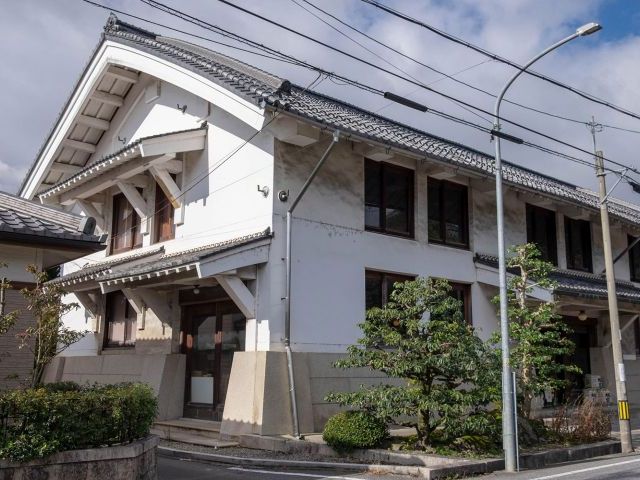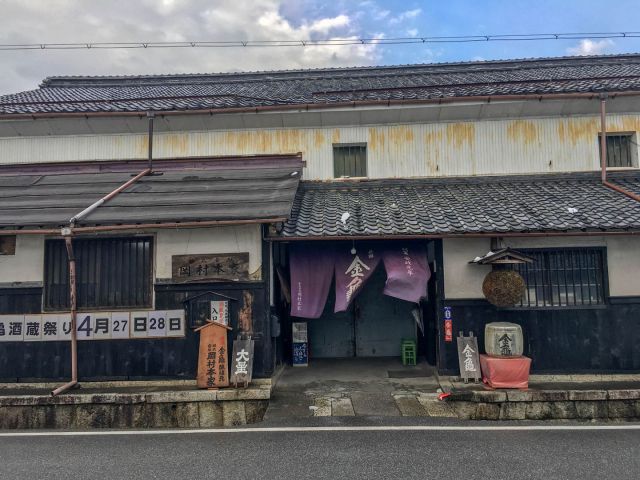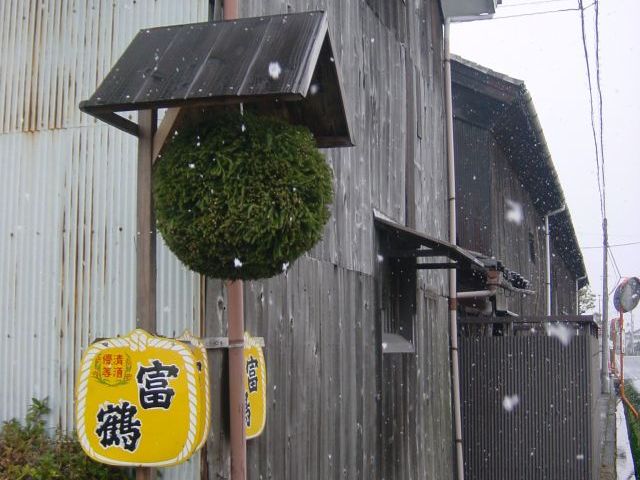Ōmi Sake
Shiga Prefecture has a lot of sake breweries for its size, many of which fall into the Ōmi region. These are typically small, family-run breweries that produce small volumes of high-quality sake. The sake produced by each brewery has its own personality, and each brand has its loyal devotees.
Rather than competing, the brewers work and study together to improve their skills and knowledge, to raise the level of their sake in general.
Shiga Prefecture is a vast basin, with Lake Biwa occupying one sixth of its area. This basin is surrounded by the Ibuki and Suzuka mountains in the east, and the Hira and Hiei mountains in the west. Snowmelt and rainwater percolates down from the mountains, appearing everywhere throughout the region as pure rivers and springs. This water is ideal for brewing sake.
Not incidentally, this abundant water is also perfect for cultivating sake rice. Ōmi has been known as a major rice production area since ancient times, and some of this production was dedicated to types that are particularly suitable for brewing sake. The ancient tradition of brewing sake here is reflected in the fact that one of Ōmi’s breweries, Fujii Honke, enjoys the honour of providing the ceremonial sake used by the Imperial Household and Shintō shrines nationwide.
Four main types of sake rice are used for brewing sake in Ōmi: Yamadanishiki is used nationwide, including in Ōmi. It’s particularly good for brewing ginjō style sake, and it’s popular with brewers for its reliability in the various stages of brewing. Tamasakae is well suited to brewing clean, dry sake. Ginfubuki is a combination of Yamadanishiki and Tamasakae. Shiga Wataribune No. 6 is said to be the progenitor of Yamadanishiki.
Shiga Wataribune No. 6 is one of the ancient Japanese varieties that is the progenitor of Yamadanishiki, but it fell out of use about half a century ago and became a rarity.
However, in recent years, the local agricultural cooperative, JA Green Ōmi, decided to revive it in a move to establish a regional brand. Starting with only about 50 grams of seeds received from the Agricultural Technology Promotion Center in Ōmihachiman, the cooperative re-established Wataribune as a production rice through repeated trial cultivation. It’s now prized as a variety that’s unique to Shiga Prefecture.
The quality of this newly viable Shiga Wataribune is on a par with Yamadanishiki, and the rice is now used in several breweries in Shiga.
The third component essential for sake, yeast, is also produced locally. Yeast breaks down the sugars in rice to produce alcohol, carbon dioxide, and amino acids. Over 200 yeast strains that live in breweries in the region have been collected, selected, and crossed to arrive at a taste that’s dry but refreshing, which drinkers never tire of drinking.
Ōmi sake and food pairing
Lake Biwa, Japan’s largest lake, has many varieties of freshwater fish which are delicious paired with sake. Ōmi sake, which emphasises the umami of rice, makes an excellent match with the mild taste of freshwater fish, while the robust flavour of yamahai and kimoto styles complement the richness of Ōmi’s premium beef.
Since winters in Ōmi are typically cold with considerable snowfall, it’s no surprise that the region’s sake is also perfect served warm. Even in spring and autumn, a flask of warm sake can be very comforting. Try experimenting with sake heated to various temperatures, or visit one of the excellent local bars or restaurants to have your sake heated to the perfect warmth for each type.
Some examples of food pairings are shown below.
Carp with its eggs
Carp sashimi sprinkled with its own eggs. This dish always features in the spring festivals of Ōmi. A robust sake, served warm, enhances the delicate richness of the sashimi.
Funazushi
Funazushi served with its fermented rice known as ‘ii’, seasoned with chopped chives. The unique harmony of rich, salty and sour keeps drinkers busy pouring one cup after another. Yamahai and kimoto styles go particularly well.
Stewed beans and shrimp
This dish is unique to the region. Soybeans are stewed with the little shrimp from Lake Biwa. A fragrant ginjō offers a nice counterpoint to the homely taste of stewed beans.
Small sweetfish tempura
Ayu from Lake Biwa remains small even as an adult. In early spring, these little fish are coated in crispy batter and eaten with salt for a delicately fragrant snack. It goes best with a crisp, cold sake.
Stewed carp with their eggs
Carp stewed in a sweet, spicy sauce, served with Japanese pepper. A slightly matured junmai served warm is the best match.



